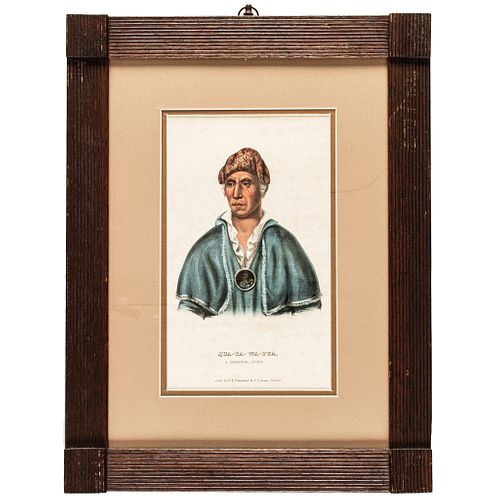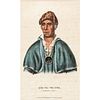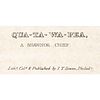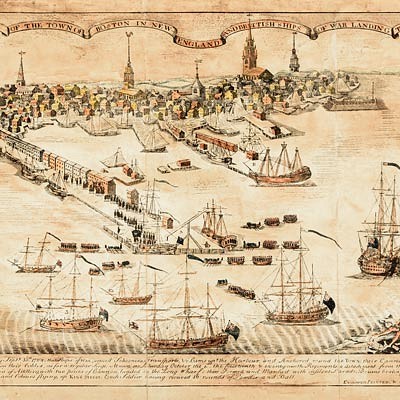c1830 Shawnee Chief Quatawapea with Silver Indian Peace Medal Handcolored Litho
Lot 327
Categories
Estimate:
$500 - $600
Absentee vs Live bid
Two ways to bid:
- Leave a max absentee bid and the platform will bid on your behalf up to your maximum bid during the live auction.
- Bid live during the auction and your bids will be submitted real-time to the auctioneer.
Bid Increments
| Price | Bid Increment |
|---|---|
| $0 | $10 |
| $200 | $20 |
| $300 | $25 |
| $500 | $50 |
| $1,000 | $100 |
| $2,000 | $200 |
| $3,000 | $250 |
| $5,000 | $500 |
| $10,000 | $1,000 |
| $20,000 | $2,000 |
| $30,000 | $2,500 |
| $50,000 | $5,000 |
| $100,000 | $10,000 |
| $200,000 | $20,000 |
| $300,000 | $25,000 |
| $500,000 | $50,000 |
About Auction
By Early American History Auctions
Mar 20, 2021
Set Reminder
2021-03-20 12:00:00
2021-03-20 12:00:00
America/New_York
Bidsquare
Bidsquare : Autographs-Colonial-Political-Americana
https://www.bidsquare.com/auctions/early-american-history-auctions/autographs-colonial-political-americana-6509
330 Lots of Rare, Historic Autographs, Americana, Civil War Era, George Washington, Abraham Lincoln, Slavery & Black History, Revolutionary War Era, Colonial America, Federal Period, War of 1812, Colonial Currency, Indian Peace Medals & more... Early American History Auctions auctions@earlyamerican.com
330 Lots of Rare, Historic Autographs, Americana, Civil War Era, George Washington, Abraham Lincoln, Slavery & Black History, Revolutionary War Era, Colonial America, Federal Period, War of 1812, Colonial Currency, Indian Peace Medals & more... Early American History Auctions auctions@earlyamerican.com
- Lot Description
Indian Peace Medals
c 1830 Shawnee Chief Quatawapea, Hand-Colored Litho
c. 1830 Early 19th Century, Hand-Colored Lithograph of Quatawapea, a Shawnoe Chief, Wearing his United States presented Silver Indian Peace Medal by Secretary of War Henry Dearborn, Framed, Choice Very Fine.
Early 19th Century Lithograph of Qua-Ta-Wa-Pea (Quatawapea), Hand-Colored and Published by J.T. Brown of Philadelphia, Choice Very Fine. This Lithograph measures 5.5" x 9.5" (by sight) and is double-matted in tan and gold in a period appearing decorative frame measuring to 12.25" x 16.25". This Lithograph is after a portrait of Quatawapea by Charles B. King. Quatawapea, also known as Colonel John Lewis, is seen wearing the Silver Indian Peace Medal he was awarded by Secretary of War Henry Dearborn. This rare Silver Peace Medal, awarded by Dearborn because of Quatawapea's impressive dress and manners, which resulted in Quatawapea being named Chief of his Native American Indian Tribe on account of the Tribe's belief in the United States. By awarding him an important Presidential Silver Peace Medal, it helped Quatawapea to become Chief, though he was not of particular skill in council or in war.
Quatawapea, or "The man on the water who sinks and rises again," was born at the Pickaway Plains, in Ohio, almost sixty years ago, and was a boy at the great battle of the Kenhaw a, in which his tribe acted a conspicuous part. His father and all his ancestors were distinguished for their feats in arms.
He was for many years the chief of that band of the Shawanoe tribe which resided at Lewistown, on the sources of the great Miami of the Ohio. With strangers he passed for a person of much consideration, in consequence of his fine address and appearance. He was a well formed, handsome man, dressed with much taste and elegance, and was graceful in his deportment. His horse and equipments, rifle, and side arms, were all of the most costly kind, and few of his race ever appeared so well on public occasions. As a hunter he had no superior; but he was not distinguished in council or in war.
During the late war between the United States and Great Britain, this chief joined the American army with a small band of his braves, and rendered himself extremely useful, on account of his intimate knowledge of the whole country which formed the seat of war on our north-western frontier.
Only one martial exploit, however, is recorded to his honor. At a place called Savoirin's Mills, he attacked a small fortification, at the head of his warriors, with such fury, that the British garrison was compelled to evacuate it hastily, and seek safety in flight. They were overtaken and many of them captured; the pursuit was continued for some hours; Vet it is a fact, highly honorable to this chief, and the Shawanoe warriors under his command, that not a scalp was taken, nor a prisoner put to death. The British soldiers who were captured were treated with the greatest humanity.
The reader will have observed, that it is not uncommon for the Indian warriors and chiefs to have several names, and that many-of them are named after eminent persons among their civilized neighbors. Thus the individual before us is better known by those who speak our language only, as Colonel Lewis, than by his original Indian designation.
He lived for many years near Waupaghconneta, in Ohio, where he cultivated a large farm, to which he devoted much attention. Unlike most of his race, he had learned the value of property, and exerted himself to increase his possessions. This conduct rendered him unpopular with his tribe, by whom he had never been greatly esteemed; and he was at length deposed by them, under a charge of peculation, in having applied to his own private purposes the money received from the United States for the use of his people.
It is said that his appointment to the station of chief was entirely accidental. Being one of a delegation which visited the seat of government while General Dearborn was Secretary of War, the superiority of Colonel Lewis, in dress and manners, probably induced the Secretary to regard him as the most conspicuous person of the party, and he presented him with a medal.
On his return, the Indians regarding this decoration as an indication of the wishes of the American government, and desirous to testify their obedience to the hint which they supposed to have been thus given, yielded to him tacitly, a precedence which soon grew into a confirmed authority; and such is their rigid notion of discipline, and their habitual respect for their chiefs, that they submitted to him cheerfully while he remained in office. They even retained him for some time after they were satisfied of his unworthiness, at the instance of the agents of our government, who supported his cause, because they found him inclined to peace, and friendly to the whites.
After his deposition from the chieftainship, he emigrated with his family, and a few followers, to the country west of the Mississippi, allotted by the American government to the Shawanoes, where he died in 1826.
Our Auction Contents:
Black History & Slavery: (Lots 1 - 63)
Abraham Lincoln Related: (Lots 64 - 74)
Historic Autographs: (Lots 75 - 235)
Colonial America: (Lots 236 - 261)
Revolutionary War: (Lots 262 - 304)
George Washington Related: (Lots 305 - 306)
Early American Guns & Weapons: (Lots 307 - 318) - Shipping Info
-
Early American provides in-house worldwide shipping. Please contact us directly if you have questions about your specific shipping requirements.
-
- Buyer's Premium



 EUR
EUR CAD
CAD AUD
AUD GBP
GBP MXN
MXN HKD
HKD CNY
CNY MYR
MYR SEK
SEK SGD
SGD CHF
CHF THB
THB













